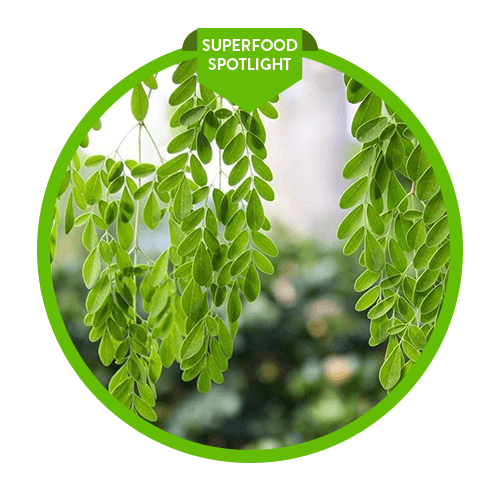Are you ready to indulge in a delicious and nutritious breakfast that won't make you feel guilty? Look no further than our Moringa-Powered Smoothie Bowls, perfect for National Eat What You Want Day on May 11th. These bowls are packed with superfood goodness and are easy to make, so you can enjoy a satisfying breakfast without sacrificing your health goals.
What is a smoothie bowl, you ask? It's a thick and creamy smoothie that's served in a bowl and topped with an array of tasty and healthy ingredients. Smoothie bowls are a popular breakfast option because they're versatile, customizable, and can be made in advance for busy mornings.
To make a Moringa-Powered Smoothie Bowl, you'll need the following ingredients:
- 1 banana, frozen
- 1 cup mixed berries, frozen
- 1 scoop Miracle Tree Moringa Powder
- 1/2 cup unsweetened almond milk
- 1/4 cup rolled oats
For toppings, you can use your favorite fruits, nuts, seeds, and granola. We recommend sliced bananas, strawberries, blueberries, chia seeds, and a drizzle of honey.
To prepare the smoothie bowl, blend the frozen banana, mixed berries, Moringa Powder, almond milk, and rolled oats in a high-speed blender until smooth and creamy. Pour the mixture into a bowl and top with your favorite toppings. Enjoy immediately or store in the fridge for up to 24 hours.
Why choose Moringa Powder for your smoothie bowl? Moringa is a nutrient-dense superfood that's rich in antioxidants, vitamins, and minerals. It can support your immune system, digestion, and overall well-being. Studies have shown that Moringa Powder may also have anti-inflammatory and anti-diabetic properties, making it a great addition to a healthy diet.
Sources:
- "Moringa oleifera: A review on nutritive importance and its medicinal application." Food Science and Human Wellness, 2014.
- "A Review on Nutritional and Nutraceutical Properties of Moringa oleifera." Journal of Pharmacy and Bioallied Sciences, 2018.
- "Moringa oleifera: A Review of the Medical Evidence for Its Nutritional, Therapeutic, and Prophylactic Properties. Part 1." Trees for Life Journal, 2005.







